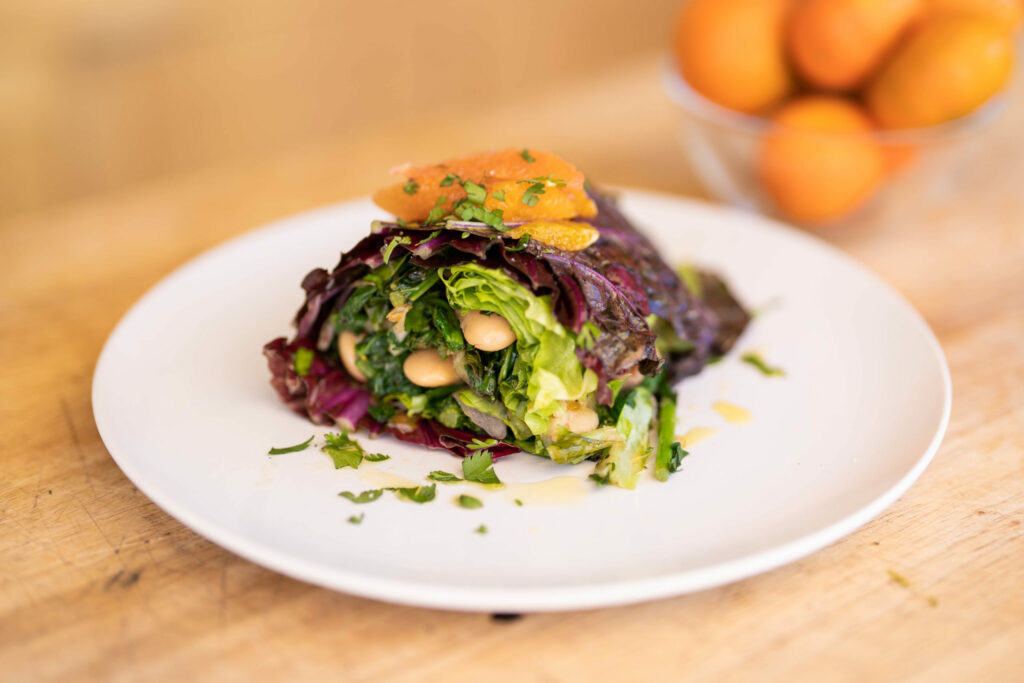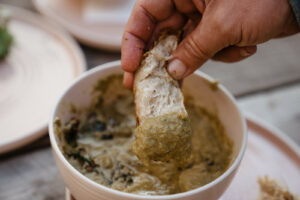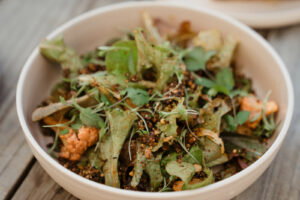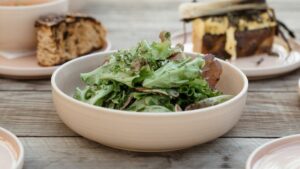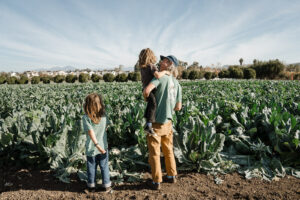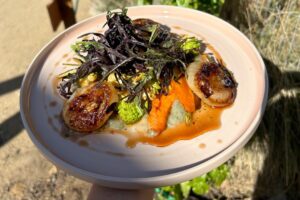“I used to have a French restaurant called Mirabeau, and when I saw the ingredients in this week’s Harvest Box, it made me think of a dish that we used to do for lunch,” says Chef David Pratt, founder of Brick in San Clemente and soon-to-be founder of Finca, a new restaurant coming to the San Juan Capistrano River Street project. “This is a version of it. We would use duck confit, but you can use any protein you want. We’re going to be using a butter bean in this recipe, but quinoa is great in it, as well as garbanzo beans or any kind of black bean. But that’s up to you. This dish is a great opportunity to use what’s in your refrigerator.”
| Salad Ingredients | |
|---|---|
| 1 head | of escarole |
| 1 head | of Napa cabbage |
| 1 head | of green panisse |
| 1 head | of treviso |
| 1 head | of kale |
| 1 head | of broccoli rabe |
| 2 | Shallots |
| 2 | Tangelos |
| 3 | Cara Caras |
| 6 | Satsuma |
| – | Olive oil |
| – | Salt |
| – | Choice of herbs (dill, basil, tarragon) |
Peel your citrus and cut into segments. You can use any kind of citrus available. Since we’re in winter, there’s tons of citrus and they’ve got a phenomenal selection at the farm. Squeeze the juices from the citrus remnants into a bowl, which we’ll use for the vinaigrette, while the segments will be used for the salad.

Take your shallots and use a mandolin or knife to thinly slice. Saute them in a pan to get them softened up and sweet.

Take the broccoli rabe and remove the stems (you can discard them, or saute them with oil and salt to include in the dish). Heat up a cast iron pan and add both the broccoli rabe and treviso with a little oil and salt. Cook until they have some color—you’re looking for a light char and some softening. Don’t overcrowd your pan so that you can make sure it stays hot. Once finished, remove from the pan and set aside in a bowl. You can add herbs such as tarragon, dill or basil if you’d like.

Now you’re going to blanch the wrap, which is the Napa cabbage (you can skip this step if your leaves are already very pliable). Boil a large pot of water, and while you’re waiting, take the biggest of the Napa cabbage leaves and cut the stems off. One the water is boiling, add the leaves for just 5 or 6 seconds to soften them up. Put the leaves into some ice-cold water, just to shock them and stop the cooking.

We’re ready to make our dressing. Put a little olive oil in a bowl along with your reserved citrus juices. Add salt and pepper along with your choice of herbs.
Roughly chop the broccoli rabe and the treviso and add them both to the pan with your shallots. Just combine them a touch and add seasoning. Add the beans and some of the citrus segments and saute together. Remove from the pan and place everything in a large bowl with your dressing. Roughly chop your green panisse, add to the bowl and lightly toss.

This is the fun part—now you’re going to compile a roulade. Lay a sheet of plastic wrap on a cutting board and place your Napa cabbage leaves on top. Using tongs or your hands, take some of that warm salad and lay it onto the bed of Napa cabbage. Using the plastic wrap, roll the salad up like a big vegetable sushi roll. Carefully unwrap the plastic, trying to keep the roll tight.


Cut the roulade in half, and trim the sides if you like. Add your remaining segments of citrus to the top and enjoy.



